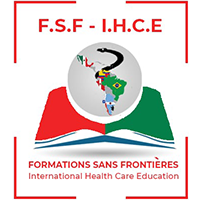In Mexico, the migration issue is very complex, as it involves different types or migratory flows such as: migration of origin, transit, destination and return. According to information from the International Organisation for Migration (IOM), the Mexico-United States migration corridor is the busiest in the world, as the United States of America is currently the main destination of world migration.
According to what was reported by the Migration Policy Unit (UPM) of the Ministry of the Interior (SEGOB) during 2018: 138,612 people of different nationalities were detained in immigration stations or stays of the National Institute of Migration (INM), a figure that in 2017, was 93,846. In addition, during 2018: 112,317 foreigners were deported or received the benefit of assisted return from Mexico to other countries, while in the previous year, the figure reached 82,237 foreigners.
The Migration Policy Unit of the Ministry of the Interior also reported that in 2018: 31,717 migrant children and adolescents (NNA) were presented to the INM, of which 1,202 were travelling unaccompanied (i.e. without a parent or guardian). As of February 2019, the figure stood at 5,121 children and adolescents, of whom 1,101 were travelling unaccompanied.
Cause of Migration

Nowadays, migratory flows are complex, i.e. there are people who migrate for labor and economic reasons, but there is also a substantial increase in the number of people fleeing their country of origin, due to situations of social violence, war or a well-founded fear that their lives are in danger and that they cannot be guaranteed the necessary protection in their country of origin, which in Mexico entitles them to apply for refugee status or to be considered as persons in need of international protection.
The International Organization for Migration (IOM) defines mixed migration flows as complex population movements, combining reasons of forced and economic migration, including refugees, asylum seekers, displaced persons, economic migrants, victims of trafficking, victims of smuggling, unaccompanied or separated children and adolescents, persons who have been subjected to violence, cross-border traders and environmentally induced migrants.
The situation of these people who migrate to other countries, escaping from situations of war or other conflicts, goes through critical moments, and they do not hesitate to embark on odysseys by sea or by land that can last for months, even falling into the hands of traffickers to whom they must pay large sums of money to ensure their arrival in the country of destination.
Major Global Migration Flows
- The first is between Mexico and the United States of America. Mexicans are the most powerful group of immigrants from that country since the 1980s. It is known that the Mexican-US border is not only crossed by Mexicans, but also by people from Central American countries in search of a better economic situation.
- The second is in Europe and neighboring countries. In addition to dealing with migrants who cross countries due to economic crises, there is also another group that seeks to escape the violence in their countries and migrate to Europe illegally.
- And finally, there is the flow in the Middle East and North Africa, one of which has been increasing in recent years and which has been driven by wars. This area has witnessed movement, both in terms of refugees and internally displaced persons.
Mexico is currently an important part of the busiest migration corridor in the world. Its proximity to the United States of America, the main migrant-receiving country, makes it a territory not only of origin, but also of transit and return of people in a situation of human mobility, specifically migrant workers and their families, as well as people in need of international protection, who seek to enter the United States without having the legal documents required to do so.
Situation in the Migration Context

People in the context of migration try to be invisible to the authorities, a circumstance that forces them to seek new routes, new options of movement that makes them vulnerable to the violation of their human rights, and prone to a large number of crimes committed against them, according to the above it is important to note that the Mexican migration authorities from January to November 2017 detained 88,741 foreigners in an irregular situation.
Mexico is a recipient and necessary passage for migrants from Central America, mainly from the countries of the so-called Northern Triangle of Central America (Guatemala, Honduras, El Salvador), with a significant increase in this migratory flow every year. The main dangers faced by migrants on their journey through the country range from extortion, kidnappings, to homicides and disappearances. In the face of the worsening conditions of unemployment and poverty in Latin American countries, migration from Central America has increased significantly.
The main dangers faced by migrants on their journey through the country range from extortion, kidnappings, to homicides and disappearances. In the face of the worsening conditions of unemployment and poverty in Latin American countries, the number of migrants from Central America has increased significantly.
Common Rights Violated by the Authorities:
- The right to legal certainty (lack of legality, honesty, loyalty, impartiality and efficiency in the performance of functions, jobs, positions or commissions).
- The right to health protection (failure to provide medical care)
- The right to dignified treatment (actions and omissions that violate the rights of migrants and members of their families)
- The right to personal integrity and security (cruel, inhuman or degrading treatment)
- The right to equality (failure to provide medical care)
- The right of petition (failure to respond to a petition made by any person in the exercise of his or her right)
- The right to liberty (arbitrary detention)
The Mexican government is currently seeking to build dozens of shelters/camps needed on the northern and southern border to add to the hundreds that currently exist from different organizations and continue to be insufficient.
Statistics:














